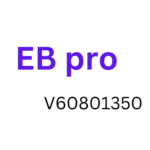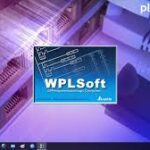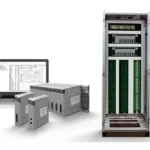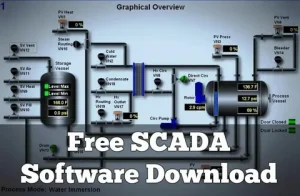Introduction to TIA Portal Modules for PLC Programming
PLCs (Programmable Logic Controllers) are critical in controlling machinery and processes in the field of industrial automation. These machines are programmed to do specific tasks with astounding accuracy, making them the backbone of modern manufacturing and industrial processes. Siemens created the TIA (Totally Integrated Automation) Portal, an innovative software suite designed to simplify the creation, commissioning, and maintenance of automation systems, to streamline the process of PLC programming. In this post, we will look at the fundamentals of TIA Portal modules and their importance in the realm of PLC programming.
Understanding TIA Portal Modules
The TIA Portal is made up of a number of software modules, each focused on a different element of automation engineering. These modules are completely connected, allowing engineers to work on different areas of a project while remaining in a cohesive environment. Here are some key TIA Portal modules:
STEP 7:
This module serves as the core of TIA Portal, offering comprehensive PLC programming capabilities. Engineers can create, modify, and debug PLC programs using various programming languages like ladder logic, function block diagrams, and structured text. The intuitive interface enables efficient code development and optimization.
WinCC:
Addressing human-machine interface (HMI) development, WinCC allows engineers to design interactive graphical interfaces for operators and plant personnel. With visual elements such as touch buttons, data visualization, and process monitoring, WinCC bridges the gap between operators and the automated systems they manage.
PLC Sim:
PLC Sim is a virtual PLC environment within TIA Portal that simulates the behavior of real PLC hardware. Engineers can test and validate their programs before deploying them to actual PLCs, reducing downtime and minimizing the risk of errors.
StartDrive:
For projects involving drive systems and motion control, StartDrive offers tools to configure and commission variable frequency drives and motion control devices. It simplifies the integration of mechanical and electrical components, ensuring synchronized motion for complex automation processes.
Safety:
Safety-critical applications demand extra attention to prevent accidents and ensure compliance with safety standards. The Safety module in TIA Portal provides tools for configuring safety-related functions, such as emergency stops and safety interlocks, within the automation system.
Benefits of TIA Portal Modules
Integrated Workflow:
The modular structure of TIA Portal encourages an integrated engineering workflow. Engineers may move smoothly between project components, saving time and lowering the likelihood of communication gaps between teams.
Efficiency and Productivity:
TIA Portal’s user-friendly interface and intuitive programming tools enhance efficiency and productivity. Engineers can build, test, and deploy automated solutions more quickly and accurately.
Reduced Downtime:
The simulation capabilities of TIA Portal modules like PLC Sim enable rigorous testing of PLC programs before implementation. This reduces downtime due to programming errors and improves system performance.
Scalability:
TIA Portal supports a wide range of PLCs and hardware components, making it suitable for projects of varying sizes and complexities. Engineers can start with small-scale applications and seamlessly scale up as needed.
Maintenance and Updates:
TIA Portal’s centralized environment simplifies maintenance tasks and system updates. Changes can be done more quickly, ensuring that the automation system is always up to date and in good working order.
Understanding Functions (FCs) in Tia Portal
In the context of Siemens’ TIA Portal (Totally Integrated Automation Portal), a Function (FC) refers to a reusable piece of code that encapsulates a specific set of instructions or logic. Functions are a fundamental building block in programming, allowing you to create modular and organized code. They help improve code readability, reusability, and maintainability by separating different functionalities into distinct units.
Here’s how Functions (FCs) work in TIA Portal:
Creating a Function Block (FCB):
In TIA Portal, you can create a new Function by defining a Function Block (FCB). A Function Block is a data type that encapsulates both the code (logic) and data (variables) related to a specific function.
When you create a new FC, you define its input and output parameters as well as any internal variables required for its functionality.
Defining Logic:
The logic that resides inside an FC is created using ladder logic, structured text (ST), function block diagrams (FBD), and other supporting programming languages. Depending on the language you select, you can use common programming elements like if-else statements, loops, mathematical calculations, and more.
Input and Output Parameters:
When a function is called, input arguments may be given to the process. The logic inside the FC can be fed information from these settings. Additionally, FCs feature output parameters that store the outcomes or values produced by the sense of the FC. The caller program can receive these values back.
Reusability:
Once you’ve created an FC, you can reuse it in different parts of your project or even in different projects altogether. This saves time and ensures consistency in your code.
Maintainability:
If you need to update the logic of a specific functionality, you only need to modify the corresponding FC. This modification will take effect everywhere the FC is utilized.
Calling Functions:
To use an FC in your program. you call it just like you would call a function in any programming language.
Testing and Debugging:
TIA Portal provides tools for testing and debugging functions to ensure they work as expected. You can simulate the function’s behavior before deploying it to actual hardware.
Documentation:
It’s good practice to provide documentation for your FCs, explaining their purpose, input/output parameters, and any relevant details. This helps other programmers understand and use your functions effectively.
Conclusion
In the world of industrial automation, TIA Portal modules have transformed the way engineers approach PLC programming. The modular architecture, integrated workflow, and powerful tools. It offered by TIA Portal make it an indispensable asset for automating processes, increasing productivity, and ensuring system reliability. As technology continues to evolve, TIA Portal remains at the forefront of innovative PLC programming software, driving efficiency and progress across industries. If you want to learn more about it then Visit our website.








